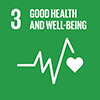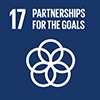Description/achievement of initiative
The China Neonatal Resuscitation Program (NRP) aims to reduce neonatal mortality and morbidity caused by preventable conditions, such as birth asphyxia, through ensuring at least one trained and skilled health worker is present at every hospital delivery. Objectives include:• Develop and implement nationwide cascade training: providing training to individuals who in turn provide the same training to others • Improve the quality of NRP training through cascade supervisions • Implement policy strategies that ensure sustainable NRP in 90% of delivery facilities• Evaluate and document NRP long-term impact
Implementation methodologies
1. Training National and Provincial InstructorsThe “Train of Trainer” (TOT) approach has expert nurse and physician faculty from the AAP who trains the national faculty, then the national faculty later trains provincial instructors representing each province. Each provincial instructor team have the responsibility to take learnings from the national meeting to bring their knowledge and training strategies to all of the hospitals in their province. 2. Rethinking Policy Active roles in resuscitation had once been reserved only for physicians. NHFPC issued a “red notice” (official government document) to communicate the need to change existing healthcare policy to include trained nurses in this critical component of newborn care. In addition, NHFPC issued a new policy to regulate the newborn safety management in hospitals. The new policy requires hospitals to have at least one NRP trained staff member present at every delivery, medications and supplies would be readily available, and the delivery room facilities would be well equipped to facilitate optimal neonatal resuscitation practice. This mandatory policy encourages every hospital to actively implement NRP. 3. Establishing hospital-based NRP teams To sustain “low dose, high frequency” NRP training, hospital-based NRP quality management team is being implemented and replicated throughout health facilities. While the provincial instructors provide initial teaching and guidance, each hospital has their own NRP instructor/instructor team to ensure that staff are regularly trained, equipment is in place, cross disciplinary collaboration, and routine newborn death case review. 4. Conducting national and provincial monitoring and evaluation Provincial and national supervision of implementation and training started in 2005 and continued, with each province establishing a supervision team, overseen by NCWCH, to ensure implementation and evaluation of NRP. Provincial supervision teams submitted an annual report to NCWCH. NCWCH annually organized and led teams on supervisory visits to hospitals in target provinces. M&E results are shared during the annual national meeting. 5. Applying Technology The project utilized a social media platform that allowed provincial level project managers to communicate and exchange ideas. There was also an online training registration to accurately track individuals who received training. 6. Motivation and experience sharingAnnual national NRP conference provides a platform for instructors and project managers to share best practices from the field, to be connected with national policy and framework, and to be recognized by national government.
Arrangements for Capacity-Building and Technology Transfer
China NRP provides a strong model that can be implemented and scaled in other countries. The newborn care and resuscitation training courses developed by American Academy of Pediatrics (AAP) have set a gold standard that can be applied and adjusted on a country basis. For example, to develop the curriculum for the training courses in China, the AAP provided the science to Chinese experts who adapted the course to fit the Chinese context. The training program itself can also be adjusted to optimize available resources and capacities of regions or countries. For example, the experience AAP gained from developing the training for rural healthcare providers in China, also contributed to the development of Helping Babies Breathe (HBB) – a simplified version of resuscitation courses for low resource settings. HBB has been implemented in Tibetan regions in China.
Coordination mechanisms/governance structure
Through China NRP, Johnson & Johnson and partners train birth attendants in newborn resuscitation techniques -- in settings from large city hospitals to county level health facilities (lowest level health facilities for birth and delivery), increasing the number of health workers who have the skills to save a newborn’s live within the 1st minute of live (known as the golden minute).At national level, the project is governed by “The NRP Task Force” which is made up of representatives from each partner. The NRP Task Force meets at least once a year to set project strategic directions and discuss implementation progress, challenges, and solutions.Implementation: • The National Health and Family Planning Commission (formerly known as Chinese Ministry of Health) plays a leadership role in the NRP Task Force and provide administrative and policy support to ensure project implementation.• The National Center for Women and Children’s Health (NCWCH), Chinese Center for Disease Control and Prevention (CDC) is the implementing partner that oversees the implementation across country. A national expert team led by NCWCH provides technical support and supervision to all provinces.• In each province, the project is managed by a leadership team led by the provincial health bureau and consists of provincial NRP trainers. The team is responsible for cascade training and supervision within the province. Technical expertise: • Chinese professional associations representing pediatrics, obstetrics and nursing, provide technical expertise in adapting global knowledge and science to meet local needs, mobilize health providers to be trained through their professional associations, and play an advisory role to the government on policies. • The American Academy of Pediatrics (AAP) provides technical guidance on global standard of science, metrics and evaluation expertise.Communications and advocacy: • Johnson & Johnson brings expertise in strategic planning, project management, innovation, communications and advocacy.
Partner(s)
Partner Organizations
• The National Health and Family Planning Commission (NHFPC, formerly known as Chinese Ministry of Health)
• Johnson & Johnson
Implementation Partner
• National Center for Women and Children’s Health (NCWCH), Chinese Center for Disease Control and Prevention (CDC)
Technical Supporting Partners
• Society of Peri-natal Medicine, Chinese Medical Association
• Obstetric Nursing, Chinese Nursing Association (CNA)
• American Academy of Pediatrics (AAP): technical and professional expertise



 2015
2015
 2015
2015
 2015
2015
 2015
2015
 Time-frame: 2004 - 2015
Time-frame: 2004 - 2015